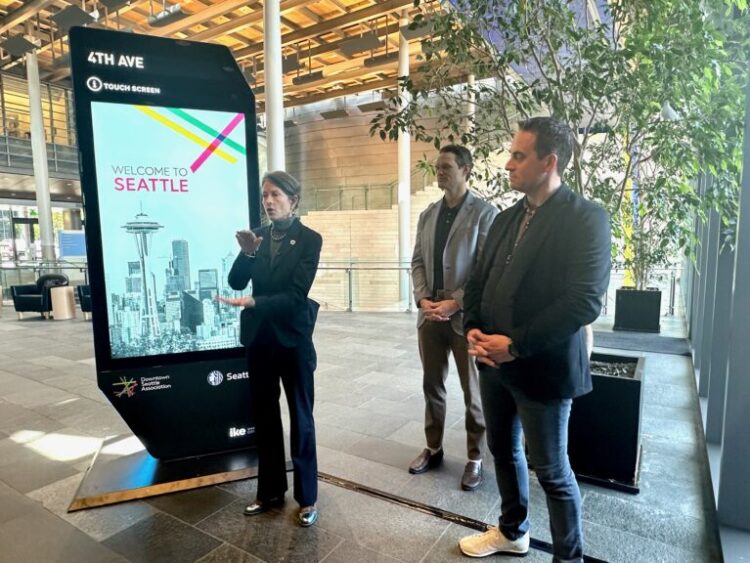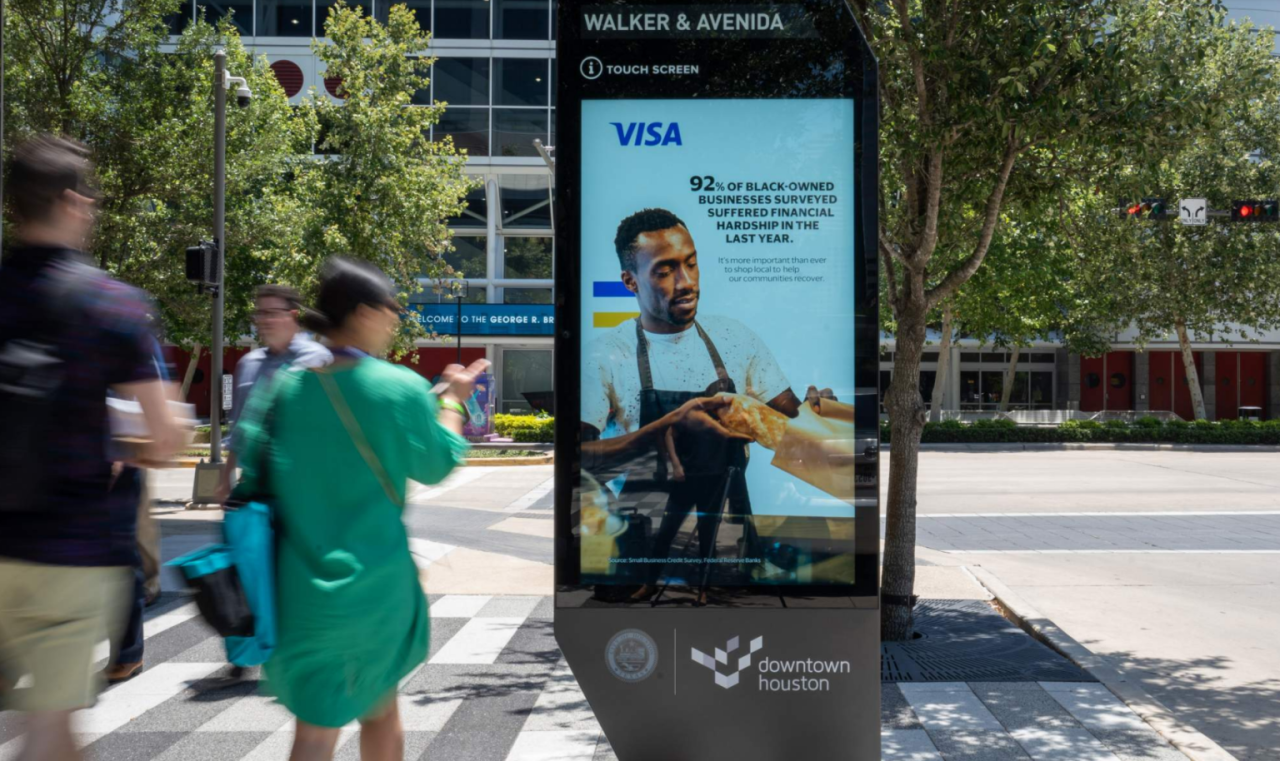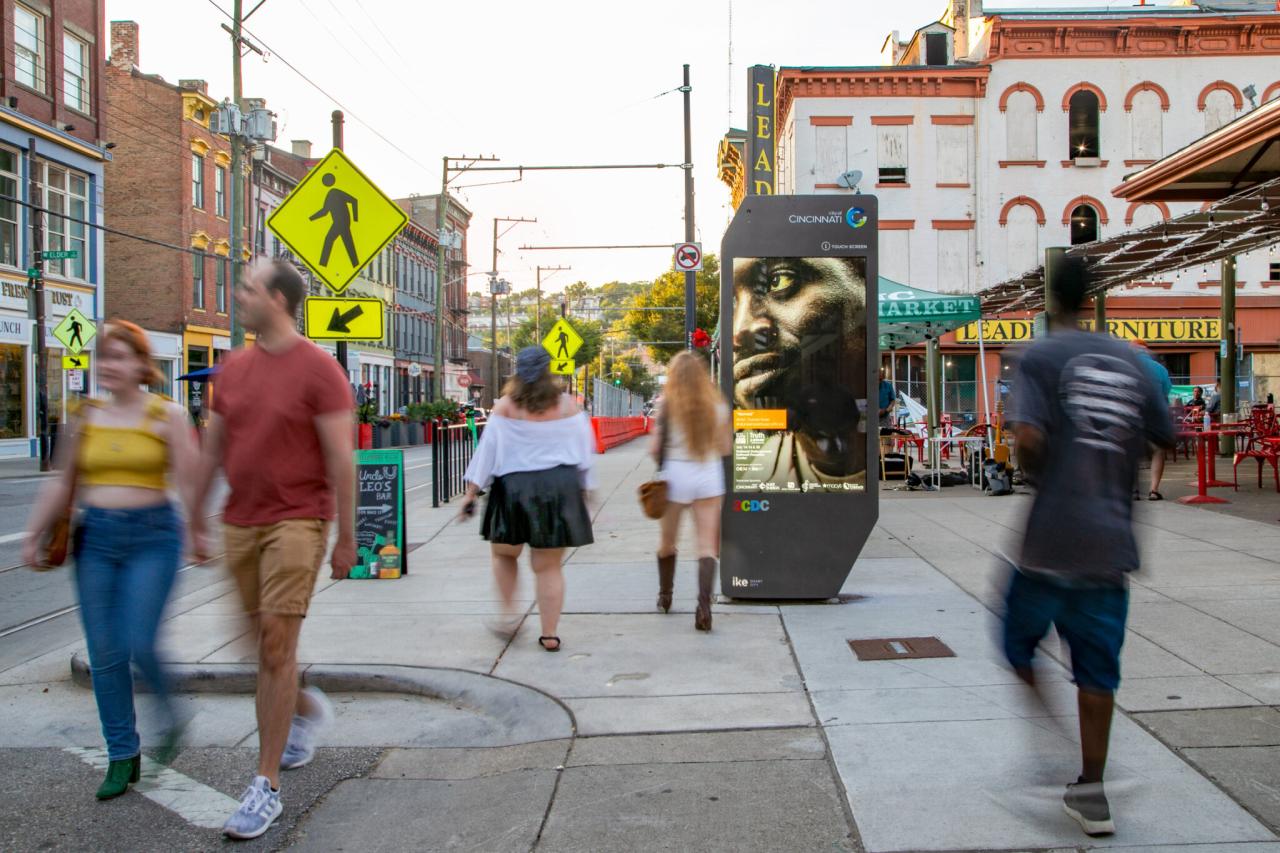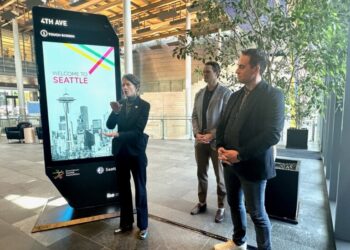Seattle is on the verge of a significant technological transformation with the proposed installation of 30 interactive digital kiosks across its downtown and business districts. This initiative, spearheaded by the Downtown Seattle Association (DSA) in collaboration with IKE Smart City, aims to modernize the city’s infrastructure, enhance public engagement, and prepare for the influx of visitors during the 2026 FIFA World Cup.
A. Overview of the Digital Kiosk Project
The proposed digital kiosks are designed to serve as multifaceted information hubs, providing residents and tourists with real-time data on public safety, local events, transportation, and nearby amenities. Standing at 8.25 feet tall and 3.15 feet wide, each kiosk will feature dual-sided touchscreens equipped with various applications to assist users in navigating the city.
The initial phase involves deploying 30 kiosks in high-traffic areas, with plans to expand to 80 units across different neighborhoods, including Ballard, the University District, SODO, and West Seattle Junction. The kiosks will not be installed in shoreline districts, historic districts, special review districts, preservation districts, the Seattle Center Overlay District, and parks boulevards.
B. Functionalities and Public Benefits
The digital kiosks are envisioned to offer a range of services aimed at enhancing the urban experience:
1. Wayfinding and Local Information
Users can access interactive maps, directions, and information about local businesses, restaurants, and events, facilitating easier navigation and discovery within the city.
The kiosks will disseminate real-time public safety announcements, including emergency alerts and updates during critical situations, contributing to a safer urban environment.
3. Transportation and Transit Updates
Integration with public transit systems will allow users to receive up-to-date information on bus schedules, ferry services, and traffic conditions, promoting efficient travel.
4. Multilingual Support and Accessibility
To cater to Seattle’s diverse population and international visitors, the kiosks will offer multilingual support and comply with the Americans with Disabilities Act (ADA), ensuring accessibility for all users.
5. Free Wi-Fi Connectivity
Each kiosk will function as a Wi-Fi hotspot, providing free internet access within a 75-foot radius, thereby enhancing digital equity and connectivity in public spaces.
6. Promotion of Local Art and Culture
The kiosks will feature content highlighting local artists, cultural events, and community initiatives, fostering a vibrant and inclusive urban culture.
C. Economic and Community Impact
The digital kiosk program is structured to be financially self-sustaining, with advertising revenue projected to generate approximately $1.1 million annually. This income will be reinvested into the city’s Business Improvement Areas (BIAs) to fund essential services such as street cleaning, security enhancements, and public space improvements.
Moreover, the initiative aligns with Seattle’s broader goals of economic development and urban revitalization, particularly in the wake of challenges posed by the COVID-19 pandemic. By enhancing the city’s infrastructure and public amenities, the kiosks are expected to attract more visitors and stimulate local businesses.
D. Addressing Privacy and Security Concerns
While the digital kiosk project offers numerous benefits, it has also raised concerns regarding data privacy and surveillance. To address these issues, the DSA and IKE Smart City have implemented several measures:
1. No Surveillance Cameras
The kiosks will not be equipped with surveillance cameras. The only camera present is a manually operated selfie camera for user-initiated photos, which are not stored or transmitted.
2. Data Collection and Usage
IKE Smart City has stated that it does not collect or sell personally identifiable information. Only anonymized usage analytics are gathered to improve kiosk functionality and user experience.
3. Compliance with Local Privacy Laws
Any future changes to the kiosks’ capabilities, particularly those involving data collection or surveillance, would require explicit approval from the Seattle City Council, ensuring adherence to local privacy regulations.
E. Community Engagement and Feedback
Public input has been a critical component of the kiosk initiative. The Seattle Design Commission and other stakeholders have conducted meetings and surveys to gather feedback from residents and community organizations. While many support the project’s goals, some have expressed concerns about potential visual clutter, light pollution, and the commercialization of public spaces.
The DSA has responded by emphasizing the careful placement of kiosks to minimize aesthetic disruptions and by ensuring that a significant portion of screen time is dedicated to public service content rather than advertisements.
F. Comparative Analysis with Other Cities
Seattle’s digital kiosk project is part of a broader trend of urban modernization seen in various U.S. cities:
1. Houston, Texas
Houston has implemented similar kiosks to promote digital equity, offering free Wi-Fi, wayfinding services, and access to municipal resources, particularly benefiting underserved communities.
2. Miami, Florida
Miami’s kiosks focus on tourism, providing information on local attractions, events, and dining options, thereby enhancing the visitor experience.
3. Denver, Colorado
Denver utilizes digital kiosks to disseminate public transit information and emergency alerts, contributing to a more connected and informed urban populace.
These examples demonstrate the versatility and adaptability of digital kiosks in addressing various urban challenges and objectives.
G. Future Prospects and Expansion
Looking ahead, the success of the initial 30 kiosks could pave the way for further expansion, with the potential to install up to 80 units citywide. This growth would extend the benefits of the kiosks to more neighborhoods, enhancing Seattle’s reputation as a forward-thinking, connected, and inclusive city.
The digital kiosk initiative represents a significant step towards modernizing Seattle’s public infrastructure, fostering community engagement, and preparing the city for global events like the 2026 FIFA World Cup. By balancing technological innovation with privacy considerations and public input, Seattle aims to create a more accessible and vibrant urban environment for all.










